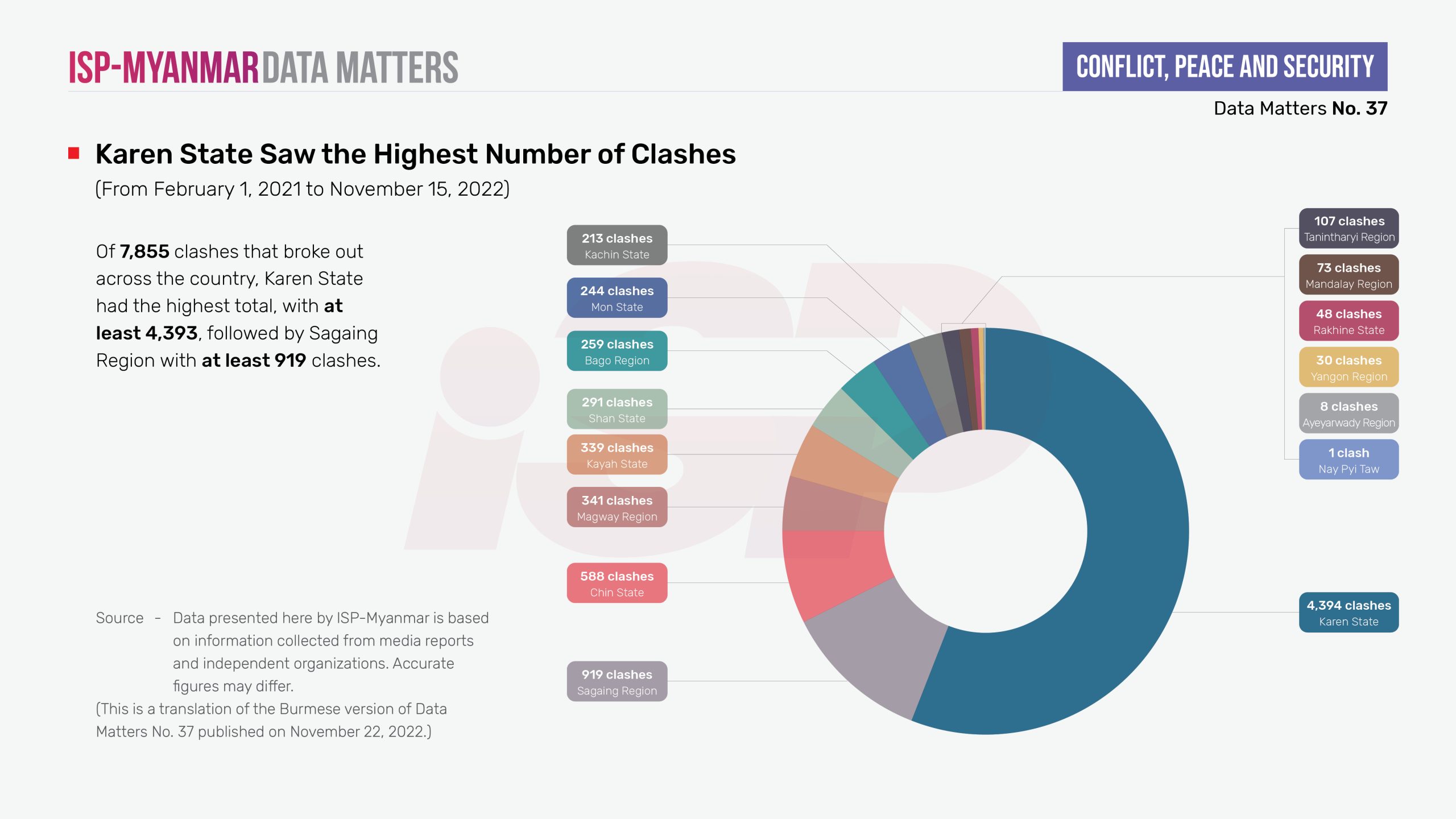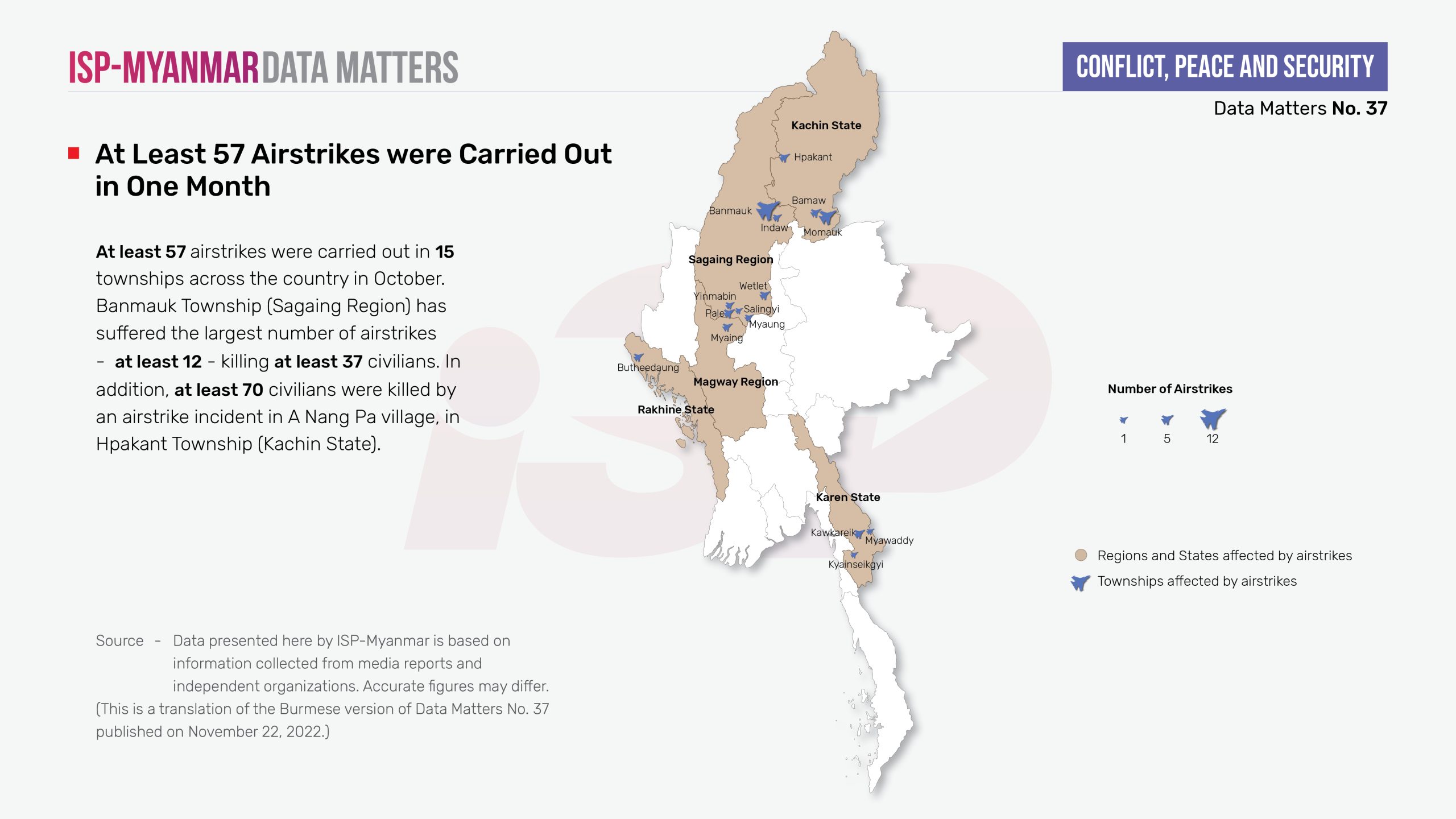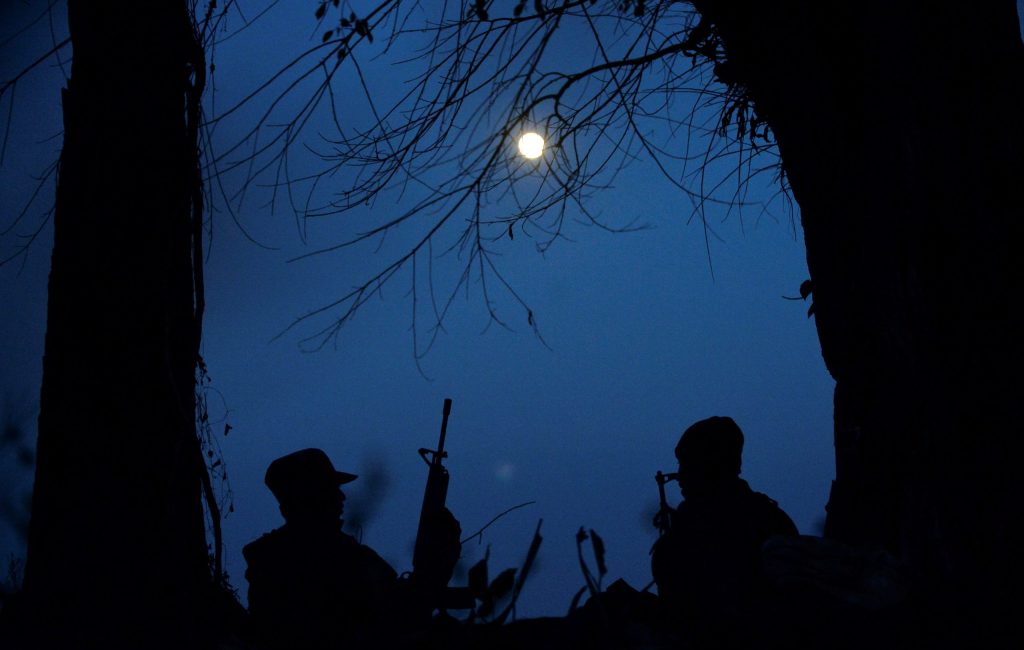Data Matters No. 37




From the start of the military coup to November 15 this year, at least 7,855 clashes have erupted across the country. Of these, at least 4,548 clashes broke out between the State Administration Council (SAC) forces and Ethnic Revolutionary Organizations (EROs). Around 2,267 clashes erupted between the SAC forces and the People Defense Forces (PDFs) including LDF, CDF, CNDF, and KNDF, while there were at least 925 clashes between the SAC forces and combined forces of EROs and PDFs.
Of 7,800 clashes that have broken out across the country, Karen State has the highest number – with at least 4,393 clashes, followed by Sagaing Region with at least 919 clashes. Moreover, fighting took place in 191 townships across the country as the clashes have escalated since the coup.
At the same time, the number of airstrikes carried out by the SAC forces continues to increase. At least 57 airstrikes were undertaken in 15 townships across the country in October. Banmauk Township (Sagaing Region) suffered the greatest number of airstrikes with 12 occurrences, killing at least 37 civilians. Furthermore, at least 70 civilians were killed by an airstrike incident in A Nang Pa village in Hpakant Township (Kachin State).
∎ Why does it matter?
By looking at the number of civilian fatalities and injuries, how they were killed and wounded, and the number of people displaced by fighting involving SAC’s forces and EAOs, or within EAOs themselves, it is possible to examine whether or not armed forces have committed human rights violations from the perspective of transitional justice. In addition, by studying the post-coup situation, further research can be conducted to examine whether there has been a change in conditions related to Myanmar’s peace process.
∎ Other relevant readings
On-the-ground reports from ethnic news organizations and other independent media groups provide regular updates about conflict situations, their impact, and the collateral damage in the aftermath of the military coup. These include reports of renewed fighting in ethnic areas, civilian fatalities, and rising refugee and IDP issues on the ground. In addition, records and reports by United Nations organizations such as the United Nations Office for the Coordination of Humanitarian Affairs (UNOCHA), and other independent local and foreign organizations also provide information about the ongoing conflict situation in Myanmar.

